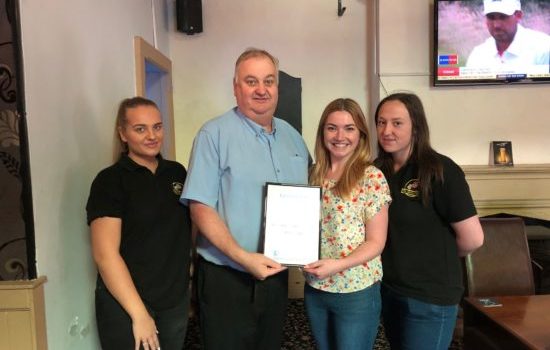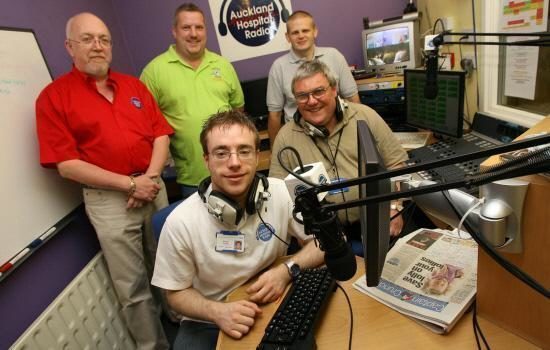In The Community
Written by PBHR Studio on July 24, 2020
How Prince Bishops Hospital Radio, originally known as Auckland Hospital Radio grew from small beginnings.
The station at Auckland Hospital Radio began life as a basic project which was conceived, and run by, a few dedicated individuals. It grew into a modern entertainment provider that was the envy of the professionals.
In 1963 a small group met in the St Helen Auckland Community Centre to hear local resident Jim Wild describe how hospital broadcasting had achieved success in other parts of the country and how he hoped it could be established in South West County Durham Hospitals.
As a result of Jim’s enthusiasm and his array of technical skills, the group backed the provision of a limited service from his studio workshop in Dale Street and a fledgling service was provided to the local Tindale Crescent Hospital.
The first broadcast – in 1963 – was a relay of the Old Time Dance in the Community Centre to the hospital patients. The group had hopes of extending the service to other hospitals in the area, but financial, technical and administrative difficulties meant this wasn’t possible, so it was restricted to the one hospital for many years.
In 1973, the question of expansion was considered again and the secretary, Mrs. Nellie Bowser, convened meetings in November of that year.
April 1974 saw the formation of a steering committee and the Tindale Crescent Hospital Broadcast Service was rebranded to the South West Durham Hospitals Broadcasting Service, reflecting the aspirations of those involved.
A link was forged with the Dryburn Hospital Broadcast Service at Durham that year and the cost of the Post Office landline was met by the League of Friends of South West Durham Hospitals in 1974.
Realising a more coordinated approach was needed for the newly expanded service, an executive committee was formed to manage and champion the service being provided.
This executive was formed from representatives of Bishop Auckland district organisations such as the local Inner Wheel Club, the R.A.F.A. Club, the Amateur Operatic Society and the Lions Club.
The Dryburn HBS informed the new committee that the Durham Area Health Authority was willing to pay for rental of the trunk linked radio service and they became involved, so from December 1974 the Bishop Auckland General Hospital (just 4 wards at the time) and Tindale Crescent Hospital were linked to Dryburn and Jim’s local studio for a couple of hours every Sunday.
For the next four years the committee concentrated on finding funds for the major capital outlay required to equip a modern radio unit within the Bishop Auckland General Hospital estate.
They received help from a number of local organisations, although some of the money raised was spent on maintaining the limited service already available.
In 1975, the committee launched an appeal for new and used records, cassettes and blank tapes so the station could start a music library. The request received a magnificent response from both organsiations and individuals.
The next step in the expansion and modernization project was to establish the location and building of a dedicated studio. The original proposal to have this in the old maternity block, which eventually gave way to the suggestion of creating it in the former nurses’ home in Escomb Road.
The hospital authorities not only provided the accommodation, but also refurbished the premises so that the compact unit of two studios, a lounge, record library and kitchen attracted praise from professional broadcasters across the region.
The success to date attracted money from various sources, which was spent on the building and equipment, a process in which Jim played a vital role.
Auckland Radio was officially opened on October 14, 1978 by Mrs Todd, Chair of the Durham Area Health Authority.
The rest, as they say, is history.






